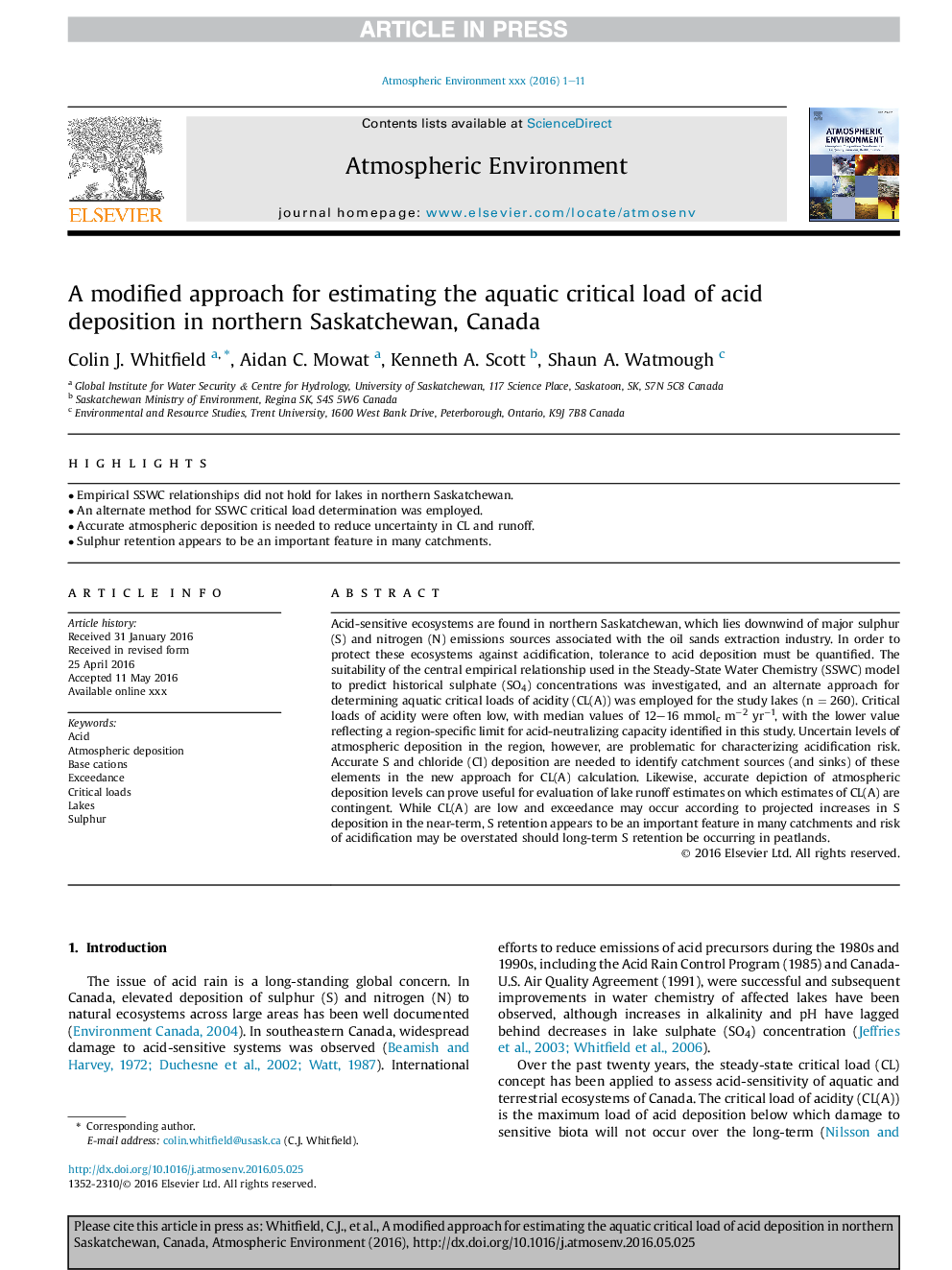| Article ID | Journal | Published Year | Pages | File Type |
|---|---|---|---|---|
| 5753285 | Atmospheric Environment | 2016 | 11 Pages |
Abstract
Acid-sensitive ecosystems are found in northern Saskatchewan, which lies downwind of major sulphur (S) and nitrogen (N) emissions sources associated with the oil sands extraction industry. In order to protect these ecosystems against acidification, tolerance to acid deposition must be quantified. The suitability of the central empirical relationship used in the Steady-State Water Chemistry (SSWC) model to predict historical sulphate (SO4) concentrations was investigated, and an alternate approach for determining aquatic critical loads of acidity (CL(A)) was employed for the study lakes (n = 260). Critical loads of acidity were often low, with median values of 12-16 mmolc mâ2 yrâ1, with the lower value reflecting a region-specific limit for acid-neutralizing capacity identified in this study. Uncertain levels of atmospheric deposition in the region, however, are problematic for characterizing acidification risk. Accurate S and chloride (Cl) deposition are needed to identify catchment sources (and sinks) of these elements in the new approach for CL(A) calculation. Likewise, accurate depiction of atmospheric deposition levels can prove useful for evaluation of lake runoff estimates on which estimates of CL(A) are contingent. While CL(A) are low and exceedance may occur according to projected increases in S deposition in the near-term, S retention appears to be an important feature in many catchments and risk of acidification may be overstated should long-term S retention be occurring in peatlands.
Related Topics
Physical Sciences and Engineering
Earth and Planetary Sciences
Atmospheric Science
Authors
Colin J. Whitfield, Aidan C. Mowat, Kenneth A. Scott, Shaun A. Watmough,
